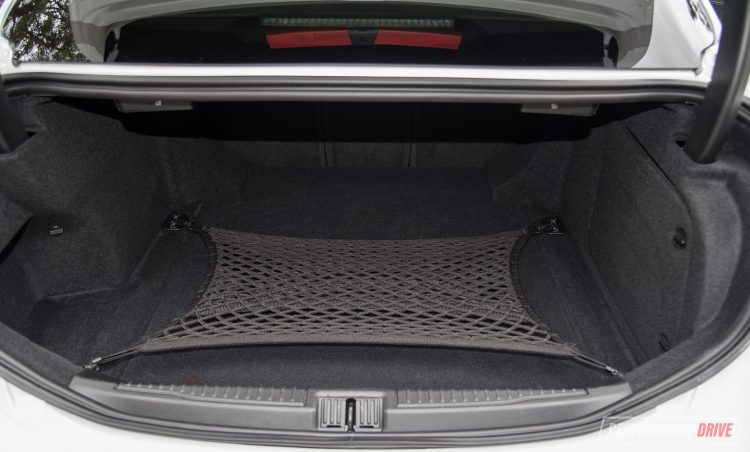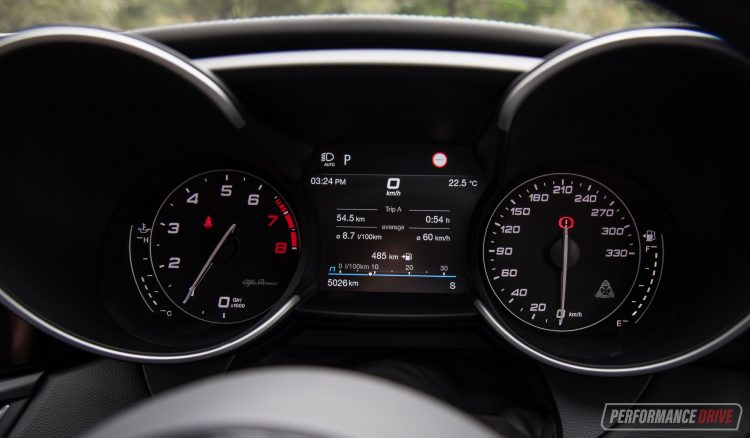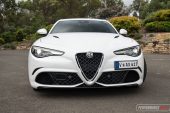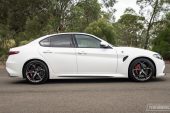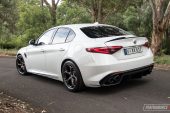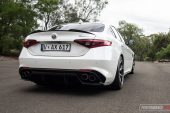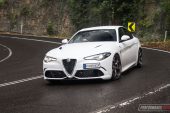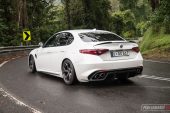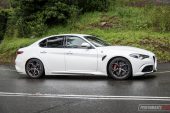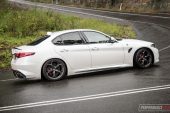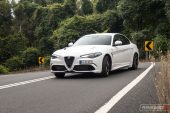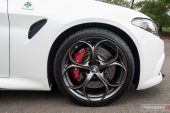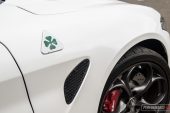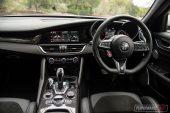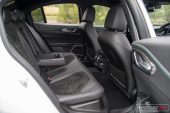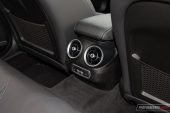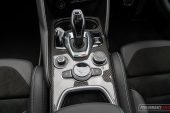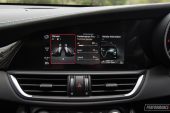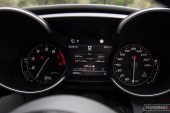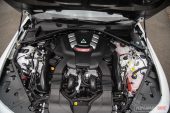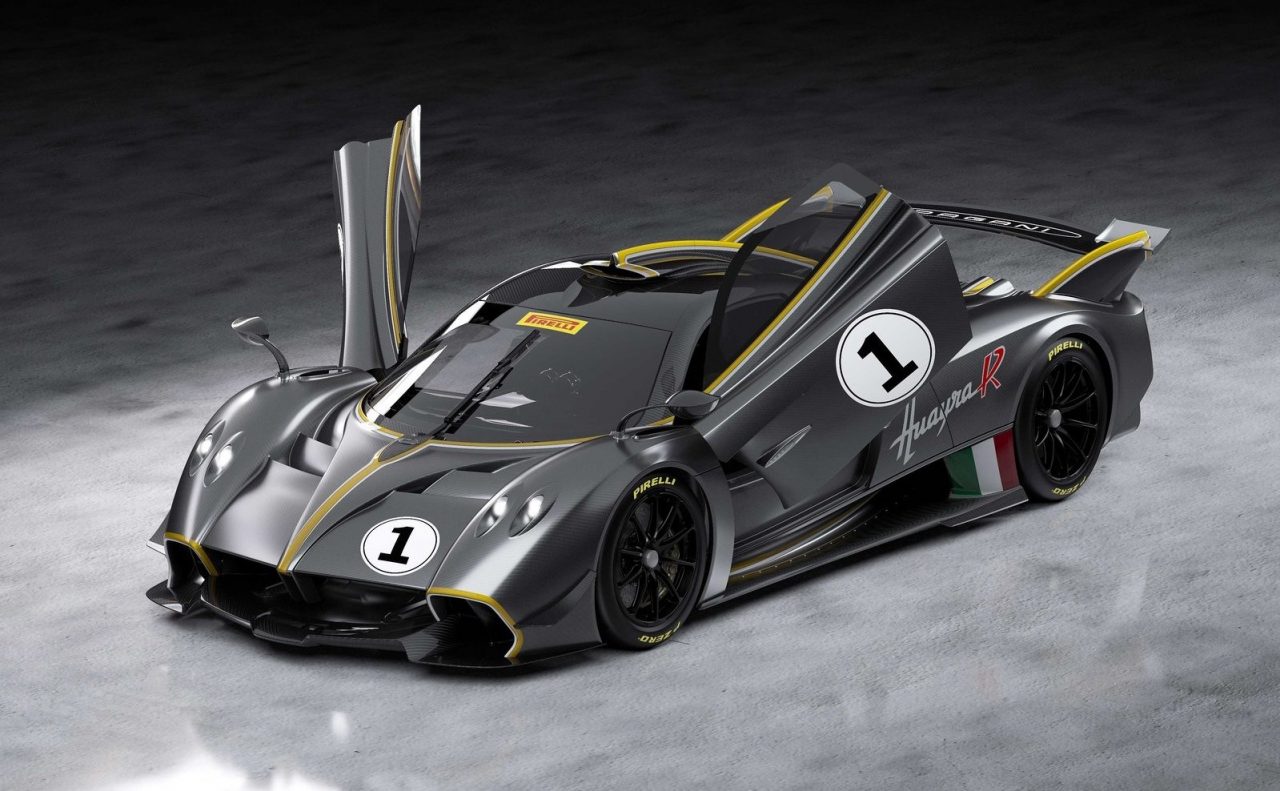Following a string of awards and high praise from motoring critics and driving fans around the world since its debut in 2016, the Alfa Romeo Giulia Quadrifoglio receives some updates for 2021 to keep it fresh. Is it still an attractive package in today’s market?
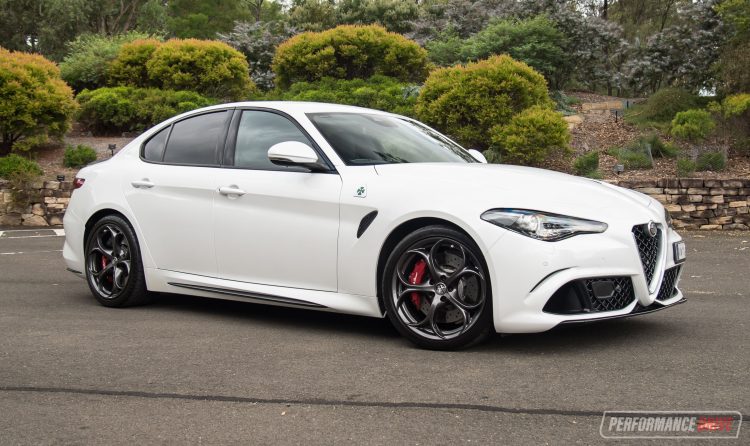
This is a car that once held the production sedan lap record at the Nurburgring, bettering not just the greatest and beastliest super sports sedans from Germany, but also some very high calibre sports cars. It was achieved thanks to its Ferrari-inspired twin-turbo V6 engine, but also thanks to its class-frightening agility and low weight of just 1585kg.
Not much has changed for the 2021 model, aside from some spec revisions for entry variants, new options, and the introduction of more advanced driver assist safety technologies. But like a wise old man would say, ‘if it ain’t broken, don’t fix it’.
Prices have dropped over years since its arrival. For the 2021 model, it starts from $138,950, down from $145,900 with the 2018 model. This is not something you see very often. Usually carmakers will increase their prices.
2021 Alfa Romeo Giulia Quadrifoglio – THE SPECS
[column width=”47%” padding=”6%”]Engine: 2.9-litre twin-turbo V6
Output: 375kW@6500rpm / 600Nm@2500-5000rpm
Transmission: Eight-speed auto
Drive type: Rear-wheel drive, active differential
Wheels: F: 19×8.5, 245/35 R: 19×10, 285/30
ANCAP: Five stars (regular Giulia)
Tare weight: 1585kg
Power-to-weight: 4.22:1 (kg:kW)
Official fuel economy: 8.2L/100km
Economy during test: 12.9L/100km
Fuel capacity/Type: 58L/95 RON[/column] [column width=”47%” padding=”0″]Power efficiency: 45.73kW:L/100km
0-60km/h: 2.44 seconds*
0-100km/h: 4.17 seconds*
0-200km/h: 12.71 seconds*
60-110km/h: 2.26 seconds*
1/4 mile: 12.18 seconds at 196.0km/h*
Max acceleration: 1.011g
100-0km/h braking: 2.75 seconds at 34.97 metres*
Max deceleration: -1.392g
Decibel at idle (/Race mode): 55/61*
Peak decibel at 60-100km/h: 89*
Priced from: $138,950[/column][end_columns]
* Figures as tested by PerformanceDrive on the day. Factory claims may be different
2021 Alfa Romeo Giulia Quadrifoglio – THE PACKAGE
Well, one thing’s for sure, it is the most beautiful vehicle in the segment. While many rivals go for a smart and sophisticated look, the Giulia is ageing gracefully with its curvaceous wheel arches, elegant aerodynamic flourishes, and its trademark triangular front grille. From some angles it can look rather modest, and if you don’t know your Alfas the Quadrifoglio could easily be seen as a regular Giulia. But we like that about it.
As before, the top dog comes with a bespoke aero kit including a carbon fibre front spoiler, very discreet carbon fibre side skirts, and a subtle carbon lip spoiler on the boot. It’s not until you glance down and see the diffuser from hell at the bottom, with chunky fins, and the quad-outlet exhausts that you know this is something serious.
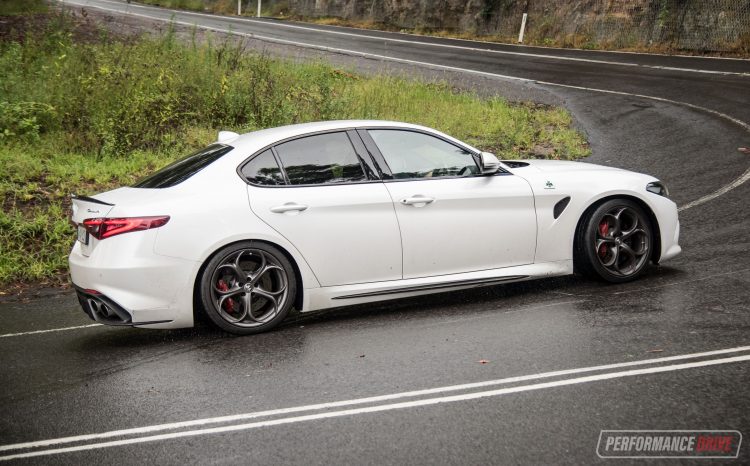
Taking a glance underneath the car and it’s even more serious. There you’ll find a series of special fins that help guide airflow at high speeds. And most of the components under there are fully concealed with completely flat panels. This is all in the name of optimum downforce and minimal drag, overall contributing to its astonishing performance and that Nurburgring lap time of 7:32.
The interior is just as alluring, particularly against the German rivals. Most rivals go for a strict and straight-lined concoction of shapes and fixtures. Here, you have a curvy dash, flowing lines, and plenty of exotic details such as carbon fibre for the console. Heck, there’s even splashes of red to support the car’s underlying thrill-seeker character.

There is a new 8.8-inch touch-screen for all variants for the 2021 model, with maps that span further and make full use of the screen size. A new menu layout is also introduced, with new interactive widgets and performance apps installed, such as a turbo boost gauge (maxed at about 20psi for us, but apparently the engine runs at up to 35psi). The screen size is actually the same as before, it’s just the software, essentially, that’s updated. And it all seems to improve the usability. It now offers Android Auto and Apple CarPlay connectivity, which instantly boosts functionality as well.
Front passengers are cradled in lovely bucket seats. They provide ample lateral support and they are actually pretty comfortable for long journeys. We made the drive from Sydney down to Kangaroo Valley – around 2.5 hours – and stepped out feeling fresh. There’s plenty of adjustment from the steering column and seat movement too so you can certainly find a natural driving position.
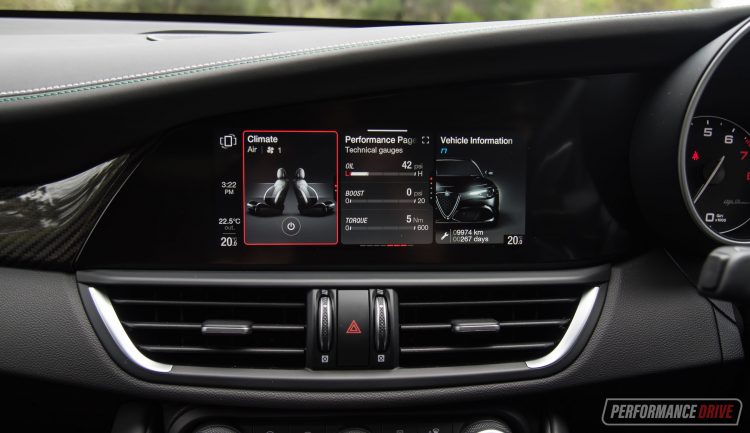
Rear seat space is a bit more confined, but it’s not really anything out of the ordinary for this class. As usual for this class, the driveline tunnel does soak up a lot of middle-seat legroom. But it is possible to transport three adults in the back. How long they last before complaining is another matter. Twin circular climates vents match those in the front, with complete swivel adjustment ensuring everyone is thermally regulated, and there are two charging ports and seat heating for the outer seats available.
Boot space is rated at 480L, which is the class benchmark, matching some of the key rivals. A netted tie-down apparatus helps to keep smaller items from bouncing about.
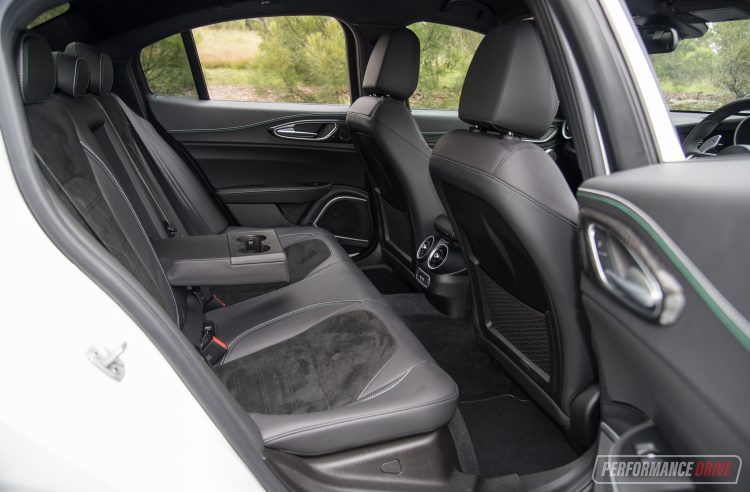
As for the 2020-2021 updates, all Giulia variants now come with Alfa’s Advanced Driver Assistance System, including road sign recognition, blind-spot assist, driver attention assist, and autonomous emergency braking with pedestrian detection. Auto high-beam and adaptive cruise control is also standard.
Buyers of the Quadrifoglio can continue to option up to hardcore carbon fibre Sparco bucket seats ($8250), and the carbon ceramic braking package ($13,500). Colour contrast stitching is now included inside, with no-cost options in green (as tested), red, and dark.
2021 Alfa Romeo Giulia Quadrifoglio – THE DRIVE
As before, power comes from a very exciting and animated 2.9-litre twin-turbo V6 engine. It is believed to be based on Ferrari’s 3.9-litre twin-turbo V8, just with two cylinders sheared off the end. And the suspicions are somewhat justified. This uses an identical 90-degree V-angle as the Ferrari F154 engine that’s used in the Portofino and F8 Tributo, with exactly the same piston bore and stroke measurements as the former, at 86.5mm and 82mm.
Even the engine code starts with the same F154 sequence. Unlike many modern V8s, the F154 does not use a ‘hot-V’ configuration. Instead, both the Alfa and Ferrari feature the exhaust manifolds (and turbocharges) positioned on the outside of the block instead of in the middle of the V. However, this uses a 9.3:1 compression ratio compared with 9.4 and 9.6 in various Ferrari models that use the F154 3.9 V8.

Anyway, it doesn’t really matter. The main thing is this is a fascinating motor, and perfectly fitting for a car like this and of this size and weight. All 600Nm is available from just 2500rpm and held until 5000rpm. At low revs the engine does sound quite rough and dirty, so it’s really surprising to feel all of that torque pulling you so hard from low revs. The sound doesn’t quite match the overwhelming sensation of g-force.
This engine does like to rev as well. Peak power is achieved at 6500rpm, where you’ll be hit with 375kW. Italians love their coffee, and we’re sure that whoever was responsible for this powertrain had quite of few of them before signing it off. It is an incredibly excitable engine, especially as it hauls through the gears with full throttle, giving off various rally-car-like pops and splutters along the way.
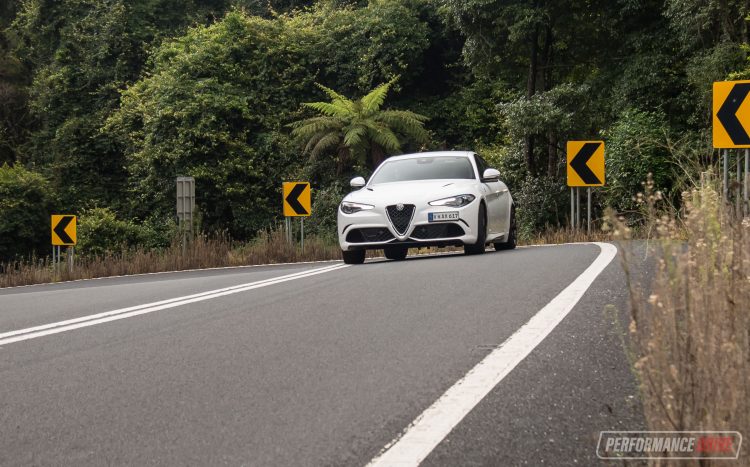
All of that power is not wasted away to wheelspin, either – unless you want it to be. On the back are a set of fat (for this class) 285/30 tyres, with 245/35s on the front. And they are Pirelli P-Zero Corsa – it ain’t stuffing about. These provide enormous grip in the corners, but even more impressive is the high level of power-down traction, including off the mark, and braking grip. You might expect nailing the throttle to send you sideways. But no. In Race mode, which automatically switches off all stability and traction control, the Alfa merely wiggles its hips as it scurries away toward the horizon.
Using our Racelogic Vbox Sport and a private road we clocked a best 0-100km/h time of 4.17 seconds, and 0-200km/h in 12.71 seconds. We also saw the quarter-mile done and dusted in just 12.18 seconds at 196.0km/h. These are some staggering numbers for this class. And in the real world, with no rollout allowances or specially-prepared drag strips. In other words, you could expect to achieve similar results yourself.
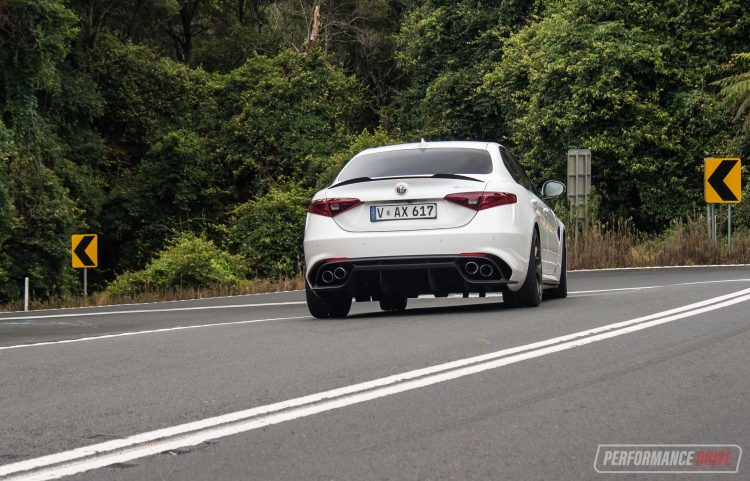
As for the handling, this is definitely the most agile vehicle of this segment in our opinion. The steering setup is extremely quick, so you only need to make minute inputs to cause a reaction. And it’s not like the car isn’t able to keep up. The moment you turn, the split second you move the steering wheel, the car is jumping immediately and exactly where you indicated. This means you can pinpoint the nose precisely in corners and extract every bit speed from the available tarmac.
On the other hand, this super-responsive steering can become tiresome and almost too touchy at times. In normal conditions, without Race mode activated, it can be difficult to just relax and calm down. Actually, difficult is not the word. You just have to be mindful, we guess is the best way to put it. After extended ownership we’re sure you’d get used to it.
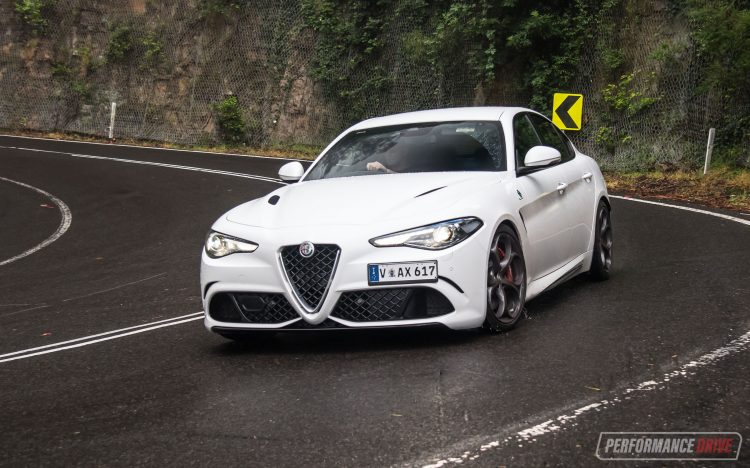
The eight-speed transmission is well-matched to this engine in terms of ratios, however, we feel like a dual-clutch auto might have been a better fit for the engine’s emotional character. It changes gears quickly, but not snappy. This is good for regular driving, obviously, but we can’t help but wonder if the lap times might be a smidge quicker with a dual-clutch.
Another area that interests us with the drivetrain is the active torque-vectoring-type differential. This is no doubt a big contribution to the way this thing corners, and how it relentlessly rips around. During our time with the car though, we did experience some single wheel wheelspin. Mainly in tight and demanding situations, such as hairpins. We think a mechanical limited-slip differential or a locking diff would be more predictable.
Overall, this is an extremely cool car to drive. It sounds badass, steers like no other in the class, and it absolutely hammers in a straight line. It can also compose itself and behave in a civilised manner, if you want it to. The ride is particularly gentle and forgiving, making it a delight to cruise around the city streets or suburbia.
2021 Alfa Romeo Giulia Quadrifoglio – THE VIDEO
2021 Alfa Romeo Giulia Quadrifoglio – THE VERDICT
It’s still one of the coolest cars on the market in our books. We love that it is a bit different and not just another German sedan. The styling is full of emotion and passion, and so is the powertrain, actually. Flat out, it is scary fast. Yet, when you want it to settle down and cruise, it can do that too. Although, the engine’s characterful charm can’t be disguised, which makes it exciting to drive no matter what the occasion.
[column width=”47%” padding=”6%”]PROS:
– Very exciting and animated engine
– Superb handling and grip, and power-down traction
– Feels (and is) very light in weight for its class
– Distinctive Italian design
– Excellent ride quality
[/column] [column width=”47%” padding=”0″]CONS:
– Steering is almost too sensitive and touchy at times
– Needs proper mechanical limited-slip or locking diff for absolute predictability
– Some cheap-feeling fittings inside[/column][end_columns]
As always, if you’re thinking about buying a new car don’t forget to click here to speak with our car buying specialists.

